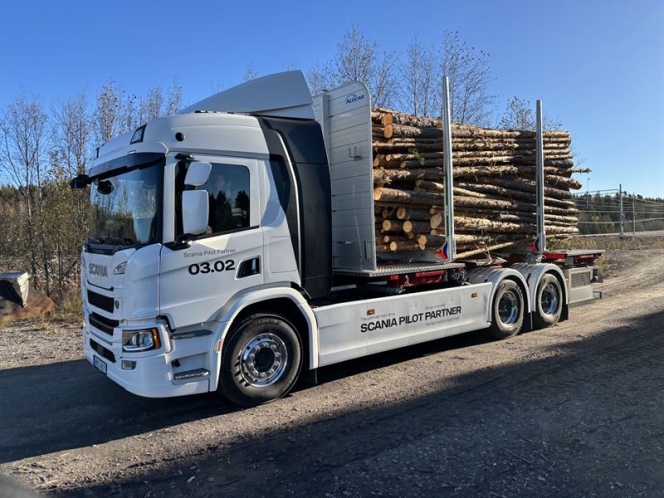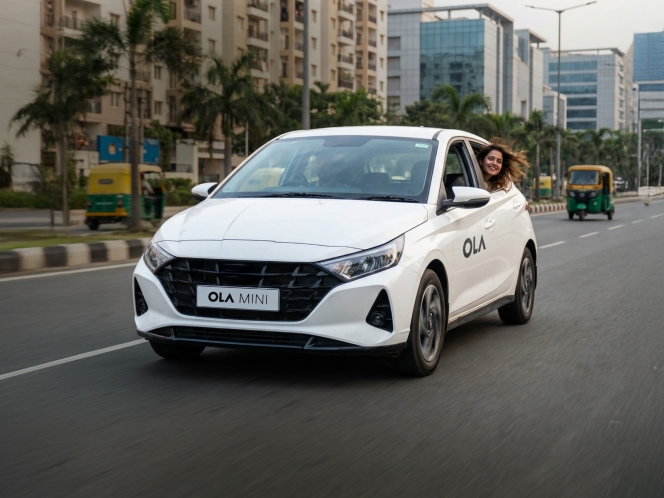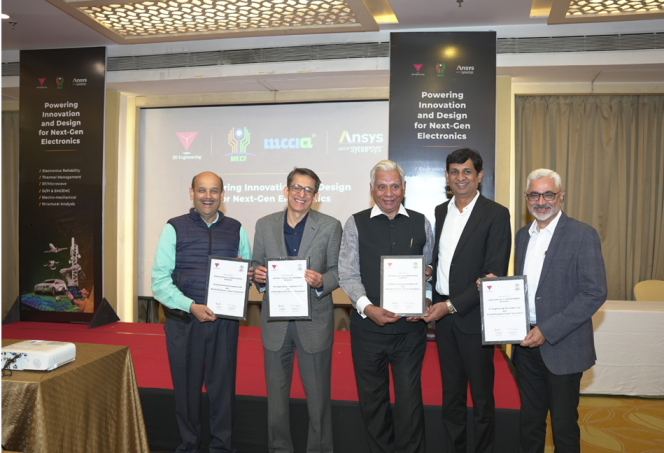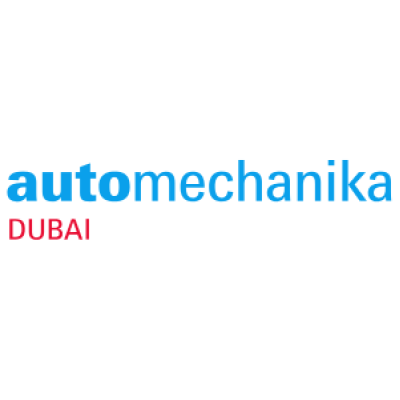
The 8th ACMA Atmanirbhar Excellence Awards and Technology Summit, organised by The Automotive Component Manufacturers Association of India (ACMA), was held recently in Delhi. The event themed on 'Gearing up for Carbon Neutrality and Sustainability,' emphasised the significance of innovation and sustainability in the auto component industry. The event was graced by industry leaders, senior government officials, and experts from around the world.
In his inaugural address, Sunjay J Kapur, ACMA President and Chairman, Sona Comstar, expressed gratitude towards Prime Minister Narendra Modi for encouraging sustainable development in the country through the 'Panch-amrit' strategy - announced at the COP 26 summit in Glasgow. The strategy aims to establish non-fossil energy capacity, satisfy energy needs with renewable energy, minimise carbon emissions, and attain net-zero emissions by 2070. “As the Indian automotive industry moves forward in 2023 and beyond, it is essential to embrace green and clean technology to remain ecologically relevant.
He highlighted the need for the auto component industry to be ahead of the curve in adopting new environmentally sound technologies, sustainable manufacturing practices, and business models that minimize carbon footprint while embracing the ethos of a circular economy.
Distinguished guests from both the Government of India (GoI) and the industry were present at the event, which included notable figures such as Piyush Goyal, Union Minister for Textiles, Commerce and Industry and Consumer Affairs, Food and Public Distribution in the Government of India; Vinod Aggarwal, President of SIAM, and Chairman of the Jury of ACMA Atmanirbhar Excellence Awards, as well as the Managing Director and CEO of VE Commercial Vehicles, and R. Dinesh, the President-Designate of CII, Executive Vice Chairman of TVS Supply Chain Solutions, and Director of TVS Automobile Solutions.
Extending his warm congratulations to all the winners of the ACMA Atmanirbhar Excellence Awards, Goyal stated that India's future in technology and innovation hinges on investment in R&D and commitment to indigenisation. He highlighted the pivotal role that the auto components industry can play in leading the charge for self-reliance, through increased investment in new technology and design, and by integrating the informal sector to indigenize the value chain. Underscoring the importance of building a strong defence industry and promoting indigenous manufacturing, as this will enable India to be self-reliant and become a reliable and trusted supplier to the world, Goyal stressed the significance of India emerging as a supplier to the world and commended ACMA's active role in supporting start-ups and smaller businesses to indigenise the entire value chain and integrate them into the mainstream.
The eminent jury for the Awards included Vinod Aggarwal, President, SIAM and MD & CEO, VE Commercial Vehicles Limited (VECV), Sunil Kakkar, Sr. Executive Officer - Supply chain, Maruti Suzuki India Ltd., Rajesh Uppal, Member Executive Board (HR, IT and Safety), Maruti Suzuki India Ltd., Anandakrishnan, Sr. VP (Purchase), TVS Motors Ltd., Vipin Kaul, Purchasing Leader Cummins India ABO, Cummins India Ltd., Angela Mans, Head of Foreign Trade and International Relations, German Association of the Automotive Industry (VDA), V. Sridhar, Senior Director, Purchase, Honda Motorcycle and Scooter India Pvt Ltd., Ganesh Mani S., President and COO, Ashok Leyland, Sundar, Asst Vice President, Unit Head, HMIL Procurement, Hyundai, Raju Ketkale, Executive Vice President, Toyota Kirloskar Motors Pvt Ltd., B. Srinivas, Executive Vice President-Product Strategy and Purchasing, VE Commercial Vehicles.
The event concluded with the announcement of 68 auto component manufacturers who were awarded the prestigious ACMA Atmanirbhar Excellence Awards across categories of Excellence in Manufacturing, Sustainable Business, Digitisation, Localisation, and Exports.
- Scania
- Horse Powertrain
- SCA
- hybrid truck
- Aurobay Technologies
- Matias Giannini
- Tony Sandberg
- Ingo Scholten
Scania Selects Horse Powertrain For Range-Extender Truck Pilot In Sweden
- By MT Bureau
- December 03, 2025

Horse Powertrain has been selected by Scania to provide its range-extender system for a pilot vehicle, currently operating as a heavy-duty timber truck in Sweden. The collaboration is a step in testing hybrid powertrain solutions for demanding transport applications such as forestry logistics.
The pilot is part of the Scania Pilot Partner program and is currently operating in Sweden under SCA, one of Europe’s forestry companies.
The vehicle is built to handle Sweden’s timber routes, transporting heavy loads through remote terrain where access to charging infrastructure remains scarce. By combining a battery-electric drivetrain with the generator designed in Sweden by Horse Powertrain’s division Aurobay Technologies, the truck achieves both long-distance capability and reduced CO2 emissions.
The test route covers approximately 16 km, with an operational target of completing 7–8 rounds per day, comparable to a diesel truck.
The configuration supports the truck’s battery packs with a 120 kW range-extender unit based on Horse Powertrain’s 2.0 litre multi-fuel engine. Acting purely as an onboard charger, the unit supplies electric energy when required during long hauls, temperature extremes, or delays.
Matias Giannini, CEO, Horse Powertrain, said, "Forestry logistics represents one of the toughest challenges for electrification. The forest roads of northern Sweden demand strength, range and reliability. Charging stations are few, but the timber never waits. You can think of our range-extender as a powerbank for a heavy-duty truck: silent, efficient, and always there when you need it. By partnering with Scania and drawing on our engineering excellence, we’re proving how a compact, high-efficiency range-extender enables electric trucks to operate reliably in the most demanding environments. It’s a technology that cuts CO2 now.”
Tony Sandberg, Vice-President at Scania Pilot Partner, added, "What we’re doing in Sweden with Horse Powertrain and SCA builds directly on the 100-day trial we ran together with a logistics partner in Germany earlier this year. That vehicle logged almost 22,000 kilometres and drove more than 90 percent of the time on pure electric power, only using the range-extender when no charging was available. The result was a CO2 reduction of over 90 percent compared with a diesel truck. Those learnings give us a strong foundation as we tailor the system for demanding Nordic timber operations."
Ingo Scholten, Chief Technology Officer, Horse Powertrain and Managing Director Sweden, Aurobay Technologies division, said, “Electrifying heavy-duty routes means understanding what drivers and operators face hour by hour. Long stretches without charging, variable loads and rapidly changing weather. This pilot lets us study those realities directly in day-to-day timber operations. The range-extender’s role is simple. Provide a stable, efficient energy supply so drivers can complete their full shift without interruption and with far lower greenhouse-gas emissions than a traditional diesel truck. The data we gather here will guide how we refine the technology and scale it for wider use across demanding transport applications.”
Horse Powertrain’s modular range-extender architecture builds on the core technology used in its passenger-car and light-commercial hybrid systems, adapted for the higher power output and durability demands of heavy-duty applications. Unlike conventional fixed-speed generator sets, the engine can operate across its full power band, allowing the system to deliver the required output efficiently while keeping fuel consumption, noise and vibration low.
The pilot truck is now undergoing testing in regular operations, carrying full timber loads to gather performance and efficiency data in real-world conditions. The results will guide future deployments of electrified powertrains in the forestry sector and other heavy-duty applications.
Maruti Suzuki Launches One India, One EV Charging Platform
- By MT Bureau
- December 03, 2025
Maruti Suzuki India, the country’s largest passenger vehicle maker, is gearing up to mark its entry into the electric vehicle segment with the soon-to-be-introduced e Vitara has announced an EV ecosystem with a comprehensive end-to-end digital platform for charging needs, including home and public charging, with an integrated payment journey.
The company has signed collaboration agreements with 13 Charge Point Operators (CPOs) and aggregators to provide seamless charging experiences on a single platform.
Maruti Suzuki has established a network of over 2,000 exclusive charging points across its nationwide dealer network, spanning more than 1,100 cities. Customers’ charging needs are further supported by the extensive partner-operated all-India charging network.
Aligned with its global vision, Maruti Suzuki will work with its partners to enable more than 100,000 Public Charging Points by 2030.
Hisashi Takeuchi, Managing Director & CEO, Maruti Suzuki India, said, “At Maruti Suzuki, we strive to extend a delightful ownership experience to our customers to build lasting trust. Today, we are taking a historic step, as we enter the domain of electric mobility with full readiness to address the EV charging concerns and boost customer confidence. We have established a robust network of over 2,000 Maruti Suzuki exclusive charging points across our sales and service network, spanning more than 1,100 cities. Further, we have collaborated with 13 Charge Point Operators to offer access to a vast charging infrastructure across the country. Aligned with Suzuki’s global vision, we plan to introduce multiple EVs and to support this, our aim is to enable a network of over 1 lakh charging points across India by 2030, along with our Dealer and CPO partners.”
'E for Me' Digital Platform
The Maruti Suzuki ‘e for me’ EV charging mobile app enables end-to-end usage of EV charging points from partner-operated charging points and Maruti Suzuki’s own network on a single platform.
The app offers a uniform customer journey for EV charging and payment through UPI or exclusive ‘Maruti Suzuki Money’, powered by Razorpay.
The platform's functions include:
- Locate, Pay & Use EV charging points available on the app.
- Use Public and Smart Home Charger from the same app.
- One card for ‘Tap N Charge’ functionality at Maruti Suzuki dealer outlets and home charger.
- Mirror e for me app on the infotainment system for seamless in-car EV charging experience.
- Remotely start/stop and manage the power output of the smart home charger.
Partho Banerjee, Senior Executive Officer, Marketing & Sales, Maruti Suzuki India, said, “Today is the dawn of a new era for electric mobility in India. It gives me immense pleasure to say that Maruti Suzuki is EV ready and will be ‘By Your Side’ with our comprehensive new platform that addresses key concerns around EV charging infrastructure. Leveraging India’s largest dealer network and our charging partners’ network, we are ensuring there are EV charging points at an average distance of 5-10 kilometres at key locations in the top 100 cities of India. DC fast chargers are also located at regular intervals along key highways to enable nationwide driving freedom for our prospective EV customers. To further enhance peace of mind, we have deployed a 1.5 lakh-strong specially-trained EV workforce to cater to every need of our customers. We have also activated 1500+ EV-ready service workshops across 1100 cities for meeting after-sales requirements to support EV ownership in every part of the country.”
To showcase the network readiness, four e VITARAs were flagged off from Gurugram in all four directions – Srinagar (North), Kanyakumari (South), Bhuj (West) and Dibrugarh (East) – as a part of the ‘e drive’.
The e Vitara Born EV, which is ‘Made-in-India and exported around the world,’ has been rigorously tested over 10 million test kilometres. Tested from ‘Sand to Snow’ over a temperature spectrum of 60deg Celsius to -30deg Celsius, the e Vitara has delivered a driving range of 543 km.
Banerjee added: “Words aside, we are showcasing the prowess of this platform by flagging off a radical ‘e drive’ that will demonstrate the real-world efficacy of Maruti Suzuki’s comprehensive EV charging network. With the ‘e drive’, we aim to boost user confidence and execute faster EV adoption, working alongside the nation’s sustainability goals for net zero.”
Ola Intros Non-AC Cab Options On Its Platform Across India
- By MT Bureau
- December 02, 2025

Bengaluru-based ride-hailing company Ola Consumer has launched its non-AC ride category across India, becoming the only player in the country to offer this option at scale.
The company stated that the goal is to offer customers maximum choice across various price points to meet their travel needs. The new category will also enable cab drivers to have lower fuel consumption and improve their earnings.
Ola Consumer spokesperson said: “With the non-AC category, we’re pushing the boundaries of how affordable and accessible urban mobility can be in India. Millions of people rely on daily, value-driven transport, and this offering is built entirely around their needs. The early response has been incredible and shows how strongly India wants more transparent, flexible, and fairly priced mobility. This move marks a step ahead in our mission to rethink mobility in India, and make it truly inclusive for every consumer.”
- Synopsys
- 3D Engineering
- Ansys
- MCCIA Electronic Cluster Foundation
- MECF
- Mike Yeager
- Murali Pullela
- Shrikrishna Gadgil
- Ajay Deshkar
Synopsys And 3D Engineering Open Design Center In Pune
- By MT Bureau
- December 02, 2025

Synopsys, in association with 3D Engineering (an Ansys Elite Channel Partner), has inaugurated a new Design Center for Engineering Simulation at the MCCIA Electronic Cluster Foundation (MECF) in Pune.
The facility aims to accelerate access to advanced simulation technologies for MSMEs and be a catalyst for industrial R&D in Tier 2 and Tier 3 cities, industry-academia collaboration and student training.
The Design Center will enhance simulation-led innovation and adoption in electronic product design engineering for MSMEs in automotive, aerospace and defence, electronics and healthcare.
The facility will provide hands-on access to engineering tools in structural analysis, thermal modelling, electromagnetics and digital twin technologies. It is equipped with licensed Ansys (now part of Synopsys) simulation platforms and a high-performance computing (HPC) infrastructure.
The MECF facility is one of the Common Facility Centers (CFCs) approved by the Ministry of Electronics and Information Technology (MeitY), valued at INR 710 million. MECF is promoted by the Mahratta Chamber of Commerce, Industries and Agriculture (MCCIA).
This initiative aligns with India's goals under 'Make in India' and 'Skill India' by enabling simulation-led R&D, accelerating time-to-market for local manufacturing innovations and building a talent pipeline trained in engineering challenges.
It will serve as a dual-purpose hub for skill development and industry consultancy, offering design, simulation services and hands-on training. It will also bridge the cost and resource gap for smaller enterprises by offering discounted access to design tools and expert support.
Mike Yeager, Area Vice-President, Synopsys, said, “Simulation is a foundation of modern engineering, and we believe in making these powerful tools accessible everywhere in India. Our collaboration with 3D Engineering and MECF, supported by the Ministry of Electronics and Information Technology (MeitY), will empower students, startups, and SMEs to leapfrog into next-generation design and innovation.”
Murali Pullela, Area Sales Director, Synopsys, said, “Our collaboration with MECF reflects the company's commitment to empower innovation from silicon-to-systems. By equipping the design center with advanced engineering tools, India’s electronics ecosystem can be strengthened, accelerating product development aligned with global standards.”
Shrikrishna Gadgil, CEO, MECF, said, “MECF helps the industry in their product development cycle from design to certification, which will support the electronics ecosystem in the region. Our vision is to make the region vibrant with innovation, fostering new products and technologies, and establishing it as a hub for futuristic products and a center of technology excellence. We’re committed to bringing world-class technology and infrastructure closer to grassroots engineering talent. For us, this Design Center by 3D Engineering with Synopsys, as the principal partner is not just an investment in infrastructure, but also an investment in people, capability-building, and future innovation.”
Ajay Deshkar, Managing Partner, 3D Engineering, said, “As a long-standing Ansys Channel Partner, we at 3D Engineering are proud to enable this ecosystem where cutting-edge simulation technology meets local ingenuity. This Design Center is a model for how industry partnerships can meaningfully drive regional innovation and contribute to India’s technological self-reliance.”






Comments (0)
ADD COMMENT